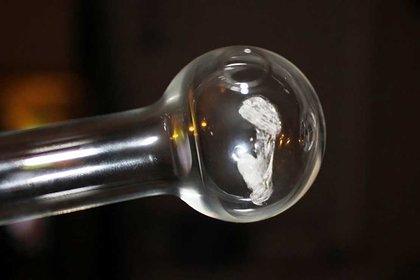
The amount of methamphetamine seized by Police increased from 99 kilograms in 2014 to 941 kilograms in 2016.
Findings from the last Massey University Illicit Drug Monitoring System (IDMS) show a sharp rise in the availability and declining prices for methamphetamine, from 2015 to 2016.
The proportion of frequent drug users who reported methamphetamine was “easier” to obtain increased from 19 per cent in 2015 to 44 per cent in 2016. The average price of a gram of methamphetamine declined in Auckland from $579 in 2015 to $485 in 2016, and in Christchurch from $1002 in 2015 to $746 in 2016. The weight of methamphetamine seized increased from 99 kilograms in 2014 to 941 kilograms in 2016.
The IDMS study, conducted by Massey University researchers, provides an annual snapshot of trends in illegal drug use and drug markets in New Zealand. More than 300 frequent drug users (133 frequent methamphetamine users, 111 frequent injecting drug users and 66 frequent ecstasy users) from Auckland, Wellington and Christchurch were interviewed about drug trends between October 2016 and February 2017.
Lead researcher, Associate Professor Chris Wilkins from Massey University’s SHORE and Whāriki Research Centre, says the frequent drug users also reported a sharp rise in the availability of crystal methamphetamine – the imported form of methamphetamine.
“The proportion of frequent drug users who reported crystal methamphetamine was ‘easier’ to obtain more than doubled, increasing from 17 per cent in 2015 to 35 per cent in 2016. The proportion of methamphetamine users who reported using crystal methamphetamine also showed a sharp increase, from 54 per cent in 2015 to 76 per cent in 2016. These findings are consistent with the record seizures of imported crystal methamphetamine made at the border in 2016, including a one-off seizure of 494 kilograms made from a coastal town in Northland,” Dr Wilkins says.

Associate Professor Chris Wilkins.
Declining availability of ecstasy
The frequent drug users reported declining availability of ecstasy over recent years, particularly in Auckland. The proportion of frequent drug users saying ecstasy was “more difficult” to obtain increased from nine per cent in 2015 to 24 per cent in 2016. “There were some reports that the strength of ecstasy has increased in recent years, and these findings are consistent with reports of a recovery in the international supply of MDMA [Methylenedioxymethamphetamine, commonly known as ecstasy]. The price of ecstasy remains low. The average price per pill has steadily declined from $59 in 2006 to $41 in 2016. Fifteen per cent of the people who purchased ecstasy reported purchasing it from the internet in 2016.”
The decline in cannabis markets
There was a sharp decline in the availability of cannabis from 2015 to 2016, following the trend after a number of years of steadily declining availability. The proportion of frequent drug users reporting that cannabis was “more difficult” to obtain increased from 17 per cent in 2015 to 34 per cent in 2016. The decline in cannabis availability occurred in all the main centres, Dr Wilkins says.
“The proportion of frequent drug users who could purchase cannabis in one hour or less has declined from 82 per cent in 2014 to 54 per cent in 2016. Consistent with this decline in availability, there has been some decrease in cannabis use – for example, the number of days the frequent methamphetamine users had used cannabis in the past six months declined from 108 days in 2014 to 84 days in 2016.”
The emergence of a black market for new high potency synthetic cannabinoids
Overall, the availability of synthetic cannabinoids decreased from 2013 to 2016, with sharp declines reported following the bans imposed in 2014. However, the strength of synthetic cannabinoids increased from 2014 to 2016, reflecting the emergence of a new wave of high potency synthetic cannabinoids. “Consistent with the subsequent emergence of a black market for synthetic cannabinoids, there were sharp increases in the proportion of frequent drug users who purchased synthetic cannabinoids from a ‘tinny house’ – up from two per cent in 2013 to 53 per cent in 2016, the ‘street drug market’ – up from zero per cent in 2013 to 30 per cent in 2016, and from the ‘internet’ – up from zero per cent in 2014 to 35 per cent in 2016,” Dr Wilkins says
There were also sharp increases in the proportion of drug users who purchased synthetic cannabinoids from a ‘drug dealer’ – up from six per cent in 2013 to 58 per cent in 2016, and ‘gang member or gang associate’ – up from zero per cent in 2013 to 56 per cent in 2016.